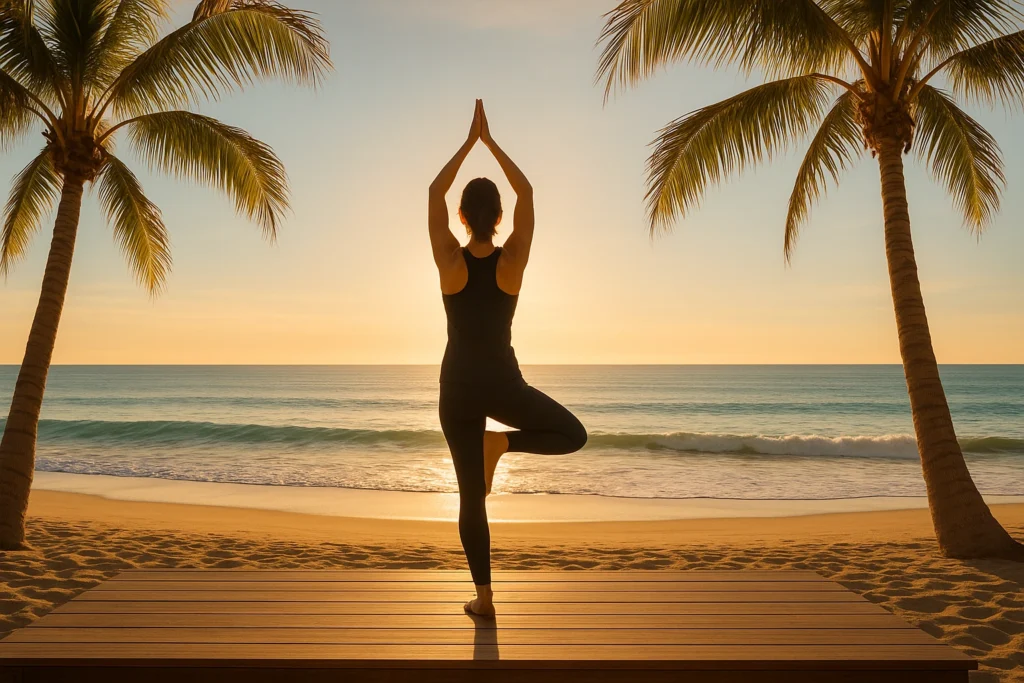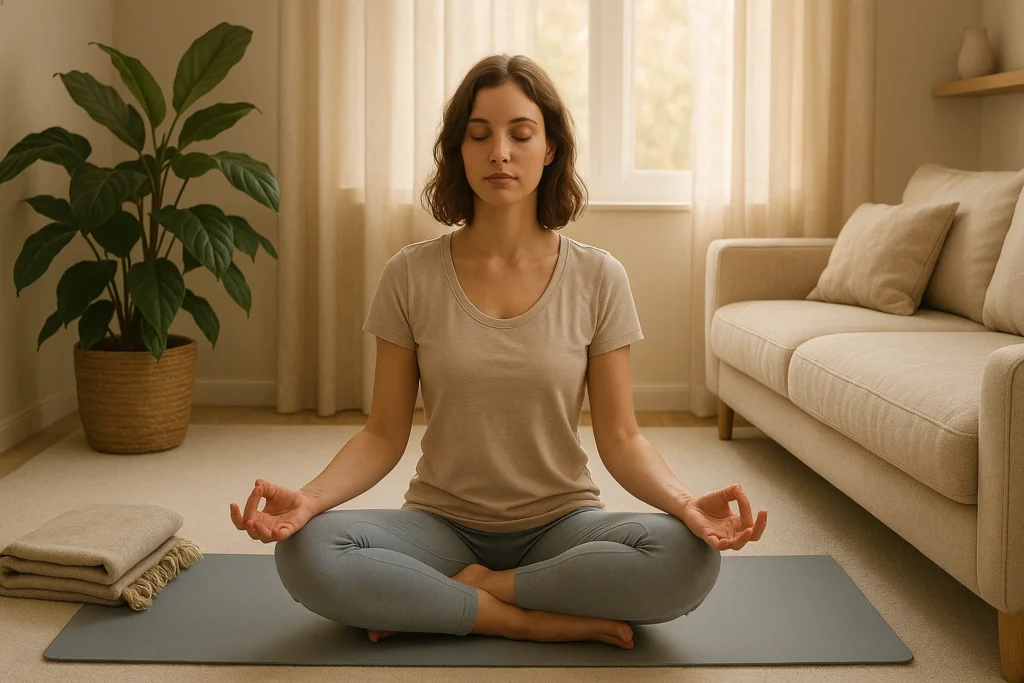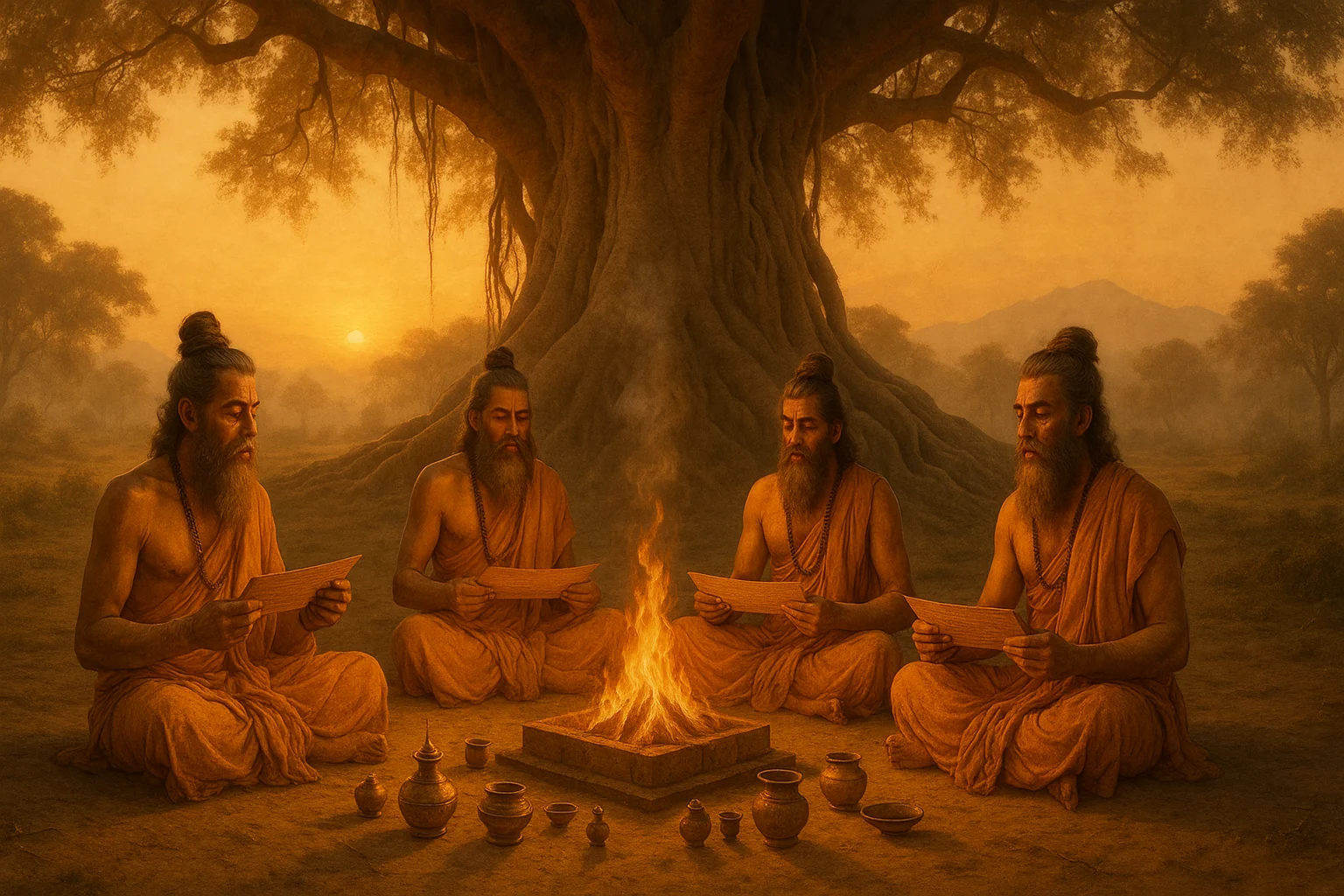
The yoga history timeline spans over 5,000 years—evolving from sacred chants to today’s vibrant studios. Understanding these roots can deepen your practice, whether you seek calm, strength, or inner peace. Beyond the poses, yoga is a rich philosophical system grounded in ancient wisdom. This article explores the major eras, texts, and figures that shaped yoga, with more insights in our comprehensive yoga philosophy guide.
Explore Yoga’s Timeline!Yoga Historical Overview
From Vedic chants and Upanishadic inquiry to Patanjali’s system, Hatha methods, and today’s global studios, this overview traces the history of yoga across millennia. Use the sections below to dive deeper into each era and see how practices shifted from ritual and meditation to diverse modern styles.
This post has affiliate links. We may earn a commission. Learn more.
Build Your Yoga Self-Study Habit
Explore concise book and podcast insights to deepen your understanding of Patanjali, habits, and mindfulness—perfect for the reflective mood of this section.
Explore now Partnered
Vedic Period in the Yoga History Timeline (c. 1500–500 BCE)
Yoga Origins
Yoga origins trace to ancient India in the Vedic Period, named after the Vedas—some of the world’s oldest sacred texts. Yoga then was a spiritual practice, not about poses but about rituals and meditation, closely tied to ancient Indian wellness practices. Sages preserved these practices through chant and ritual. The word “yoga,” from the Sanskrit “yuj” (to yoke or unite), referred to uniting the individual self (Atman) with universal consciousness (Brahman).
Early Vedic Practices
During this era, yoga involved:
- Chanting: Reciting hymns and mantras to invoke deities and achieve spiritual states.
- Rituals (Yajnas): Fire ceremonies to purify and connect with the divine.
- Early Meditation: Seers (rishis) retreated to forests for deep contemplation, seeking insight into reality.
While physical postures (asanas) weren’t mentioned, the concept of Tapas (disciplined spiritual effort, like inner heat from ascetic practices) laid yoga’s foundation. As a result, yoga was a spiritual technology for transcending the ordinary.
In the Vedic period, yoga centered on ritual and meditation rather than posture practice.
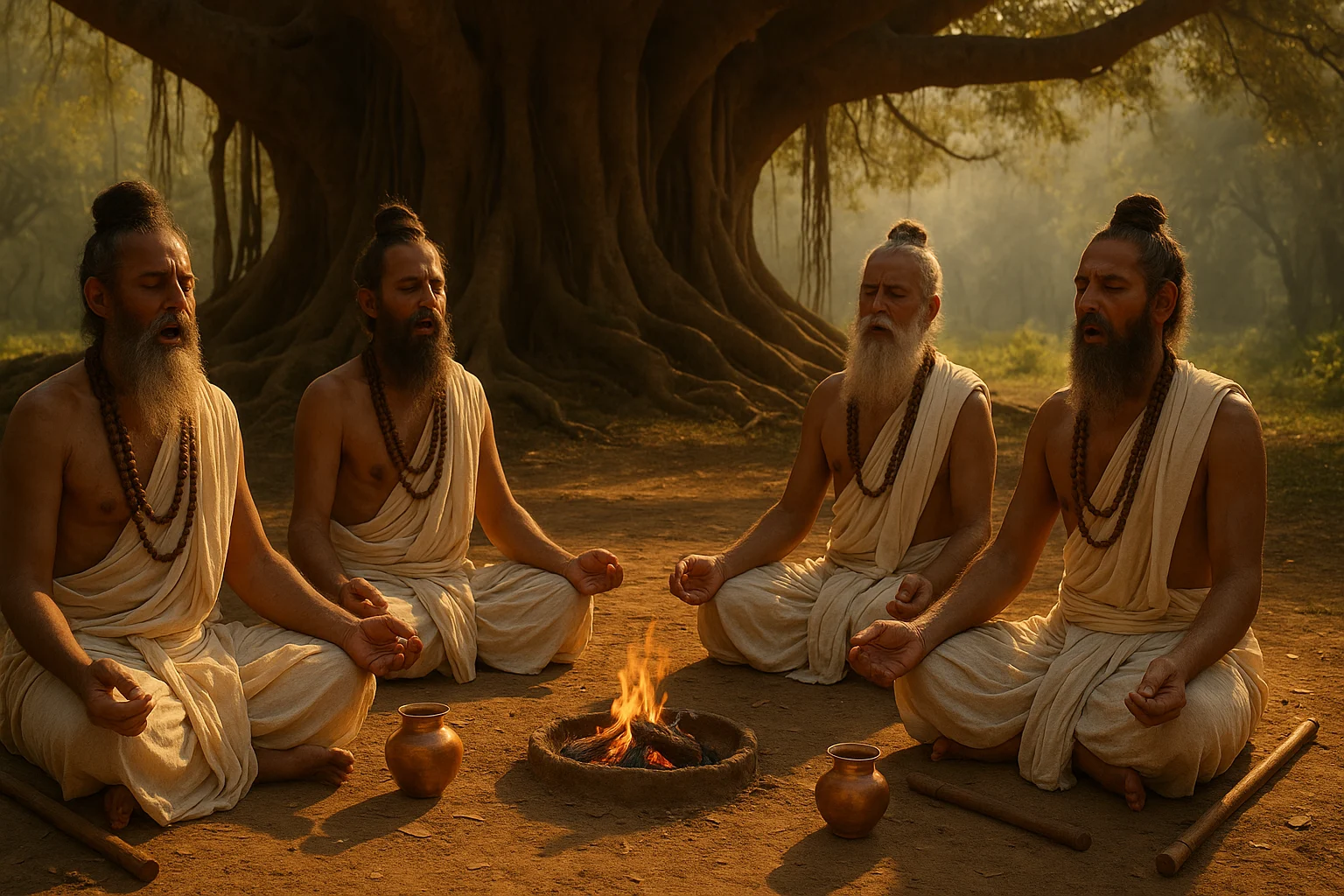
Pre-Classical Period: Philosophical Roots
Next is the Pre-Classical Period, marked by the Upanishads. Practice moved from external ritual to inward inquiry focused on knowledge (Jnana) and meditation.
Key Upanishadic Concepts
The Upanishads introduced ideas still central to yoga:
- Brahman: The ultimate reality, a universal consciousness.
- Atman: The individual soul, identical to Brahman.
- Karma: Actions and their consequences, shaping life’s path.
- Samsara: The cycle of birth, death, and rebirth.
- Moksha: Liberation from samsara, like breaking free from repetitive habits to find inner freedom.
Practices included early Pranayama (breath control to calm the mind) and Dhyana (meditation on reality). The Katha Upanishad compares the body to a chariot, with senses as horses and the mind as reins, guided by the true Self. This period established self-inquiry as a core method in yoga.
Classical Period: Patanjali’s Yoga Sutras (c. 200 BCE–200 CE)
Patanjali compiled 195 concise aphorisms that systematized practice; see Yoga’s Eight Limbs for the structure.
The Eight Limbs of Yoga
Patanjali’s Ashtanga Yoga outlines eight interconnected limbs for holistic transformation:
- Yama (Ethical Restraints): Universal morals like Ahimsa (non-violence), Satya (truthfulness), Asteya (non-stealing), Brahmacharya (wise energy use), Aparigraha (non-possessiveness).
- Niyama (Self-Discipline): Practices like Saucha (purity), Santosha (contentment), Tapas (discipline), Svadhyaya (self-study), Ishvara Pranidhana (surrender to a higher power).
- Asana (Posture): A stable, comfortable seat for meditation, not today’s dynamic poses.
- Pranayama (Breath Control): Regulating breath to channel prana (life force).
- Pratyahara (Sense Withdrawal): Turning senses inward, away from distractions.
- Dharana (Concentration): Focusing the mind on one point.
- Dhyana (Meditation): Sustained focus, flowing toward the meditation object.
- Samadhi (Enlightenment): Merging with the meditation object, achieving profound peace.
Patanjali’s goal was Chitta Vritti Nirodha (ceasing mind fluctuations) for Kaivalya (liberation). As noted by scholar Georg Feuerstein in The Yoga Tradition, Patanjali didn’t invent yoga but gave it a blueprint. Hence, his Sutras remain a cornerstone of yoga philosophy.
Medieval Period: Hatha Yoga’s Physical Awakening (c. 9th–15th Century CE)
As yoga developed, Hatha Yoga emerged, shifting focus to the body as a sacred vehicle for liberation. Unlike earlier mental disciplines, Hatha Yoga, meaning “sun” (Ha) and “moon” (Tha), aims to balance opposing energies.
Key Hatha Yoga Practices
Hatha Yoga, rooted in Tantric traditions, introduced practices to purify and awaken energy:
| Practice | Purpose |
|---|---|
| Asanas | Postures for strength, flexibility, and energy flow |
| Pranayama | Breathing exercises for prana control |
| Mudras | Hand gestures to seal energy |
| Bandhas | Energy locks for internal control |
| Shatkarma | Cleansing techniques like neti (nasal cleansing) for purification |
Influential Hatha Texts
Key texts include:
- Hatha Yoga Pradipika (c. 15th Century): Details asanas, pranayama, and bandhas.
- Gheranda Samhita (c. 17th Century): Lists 32 asanas and seven limbs.
- Shiva Samhita (c. 17th Century): Explores philosophical and spontaneous yoga.
These practices aimed to awaken Kundalini (spiritual energy at the spine’s base), preparing the body for meditation. Thus, Hatha Yoga laid the groundwork for modern physical yoga.
Modern Yoga: A Global Phenomenon (Late 19th Century–Present)
This era explains how yoga moved from spiritual practice to a global fitness and well-being staple.
Early Western Exposure
In 1893, Swami Vivekananda introduced yoga’s philosophy at the Parliament of the World’s Religions in Chicago, sparking Western interest. However, physical yoga gained traction later.
Rise of Asana-Centric Yoga
Tirumalai Krishnamacharya, the “father of modern yoga,” revived asanas in the early 20th century, teaching at Mysore Palace. His students shaped modern styles:
- B.K.S. Iyengar: Developed Iyengar Yoga, emphasizing alignment.
- K. Pattabhi Jois: Created Ashtanga Vinyasa, a dynamic flow.
- T.K.V. Desikachar: Promoted Viniyoga, tailored to individuals.
Yoga Today
Today, yoga is diverse, from Power Yoga to Restorative Yoga, often focusing on health and stress relief. Its commercialization—studios, retreats, and gear—has made it a multi-billion-dollar industry. Research increasingly documents benefits for well-being.
At-Home Sleep & Stress Test (15% Off)
Prefer data with your routine? Check baseline markers at home, then fine-tune your sleep wind-down and yoga practices with clarity.
Order your kit Partnered
Use code Max15 for 15% off sitewide.
Not medical advice; consult a healthcare professional for personal guidance.
Addressing Misconceptions
Common myths include:
- “Yoga is just stretching.” It’s a holistic system for mind, body, and spirit.
- “Yoga is a religion.” It’s a philosophy, accessible to all faiths.
- “You must be flexible.” Yoga builds flexibility, like learning to swim by jumping in.
Modern yoga’s accessibility is its strength, but its history reminds us of its deeper purpose.
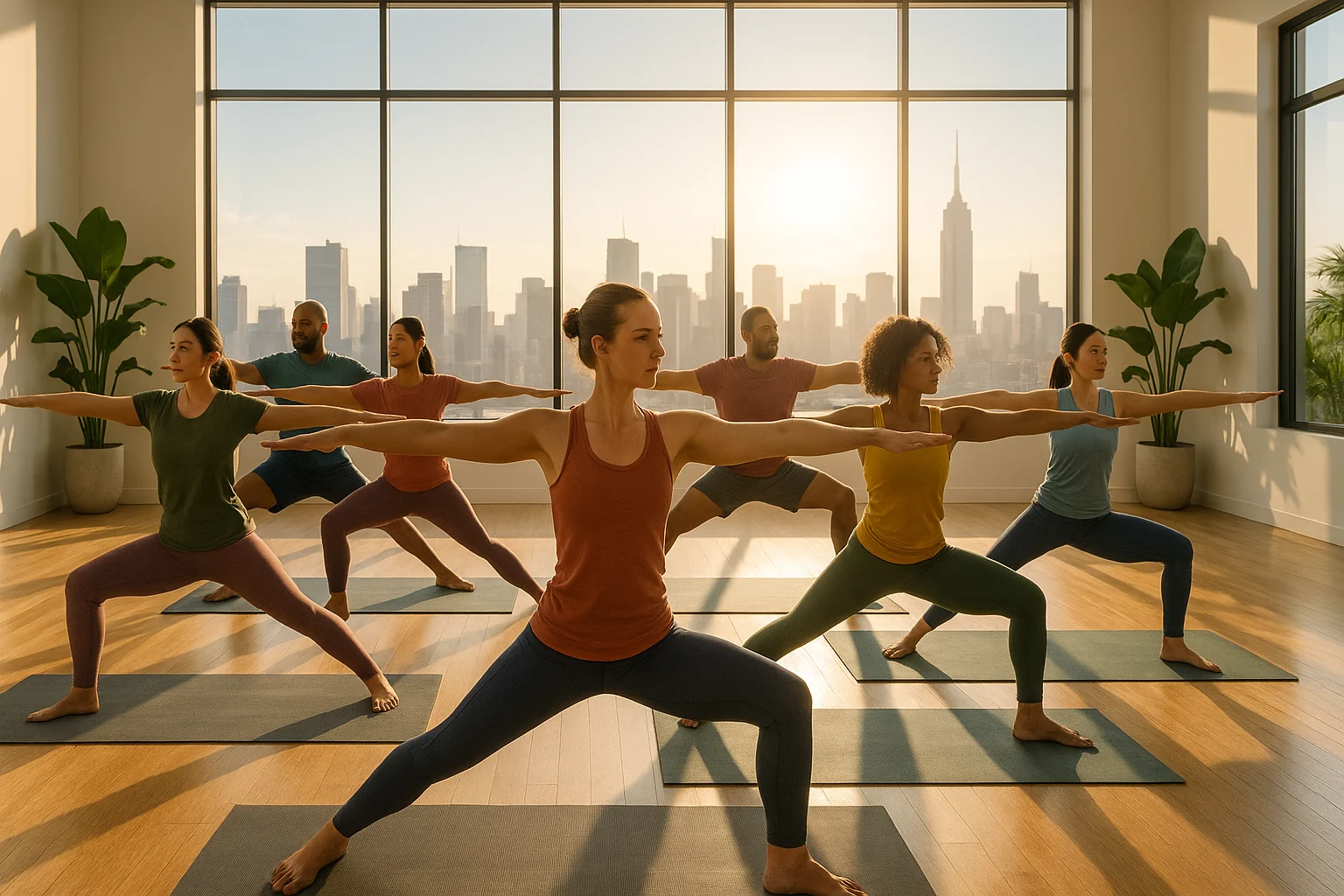
Interactive Yoga Timeline
Click an era to discover yoga’s key historical milestones.
Select an era above to see key milestones and characteristics.
Frequently Asked Questions About Yoga History
Mindful Women’s Wear for Gentle Yoga
Comfortable, low-waste layers that feel good in restorative classes and everyday movement—aligned with a calmer practice.
Explore the collection Partnered
Use code Disc20 or Disc40 (details on landing page).
Conclusion: Yoga’s Timeless Journey
This yoga history timeline shows how the tradition changed over millennia—from Vedic chant and Upanishadic inquiry to Patanjali’s system, Hatha’s methods, and modern global practice. What began as a quest for liberation now offers benefits for body, mind, and spirit. By understanding this history, you connect to a tradition that inspires balance and inner peace. Whether you practice for fitness, calm, or growth, you’re part of yoga’s living legacy. 🙏
